Hello and welcome back to Popped!
This week we’re getting a little bit nerdy about one of the all time classics by Alfred Hitchcock. If you haven’t seen Rear Window, don’t worry, there aren’t any spoilers here. But do go and rent it or pick up a copy, it’s fantastic! This isn’t an exhaustive start to finish “making-of” either. I wanted to share with you some of the parts that I found most fascinating.
A quick note to say that I have posted a new video on my YouTube channel about my recent trip to the Duke of York cinema in Brighton. Have a look here if you have five minutes.
Where was I…
It’s the middle of Summer.
A couple stretch and yawn themselves awake on the fire escape balcony of their Greenwich Village apartment.
Just next door, a young dancer confidently struts around her living room, dressing in front of the open window, while a flock of pigeons do their business on the roof above.
Beyond this small community there are children following a water truck, trying to cool off. The whole area is a bustle of life, whether pruning flowers, sun bathing or arguing, each story is playing out in their own way while we watch, like peeping toms from the rear window.
There are few films that provide such a rich landscape for film study as Rear Window. The suspenseful classic from 1954 sees James Stewart as Jeff, a photographer stuck in his apartment with a broken leg, with nothing else to do but to watch his neighbours across the way. Something is wrong though, as Jeff becomes suspicious of the goings on in front of him.
I am always in awe of the attention to detail in this film. The apartments feel real while somehow staged at the same time, like we are watching a theatre performance before the audience are let in. I wanted to know a little bit more about how this picture came together. This started me off on a little research adventure!
People talk about what “pure cinema” looks like a lot these days, but back in 1954, Hitchcock was confident he’d found just that,
“You had the immobile man… one piece of film he looks, the second piece of film is what he sees, and the third, his reaction…proving that the three pieces of film represent what we know as the purest expression of cinematic idea”
Alfred Hitchcock
On the face of it, that sounds pretty simple. Three shots, rinse, repeat. The truth is there was maze of detail that made Rear Window appear so simple.
The Set
One of the most unique sets in cinema history, Hitchcock’s film required a mammoth build. Based in Lot 18 at Paramount Studios, the set was based on a street in Greenwich Village in New York, then built over two months in 1953. They had to dig down to the lot’s foundations just to fit the whole thing in, installing a drainage system for the rainy scenes so that the lot wouldn’t flood.
Of the thirty apartments, 12 were fully furnished, plumbed and wired. Georgine Darcy, who played Miss Torso, actually lived in her apartment during the month long shoot! When in Rome…
They used almost every light available at Paramount, over 1000 of them to replicate the night and daytime (they had to turn the sprinkler system off as it was so hot on set!)
There was an elaborate plan and switches to move between scenes, everything pre-lit rather than setting up for each take. More like a theatre than a film set, this saved the crew countless hours of filming.
How they filmed it
The set was complicated enough, without considering the fact that all of this needed to be filmed from one character’s point of view.
How do we get that close up? How do we reveal that important part of the plot, when the character is the other side of the street?
If you want to get into the weeds of the techniques used in filming, I highly recommend taking a look at this article by The American Cinematographer. But one part I found fascinating was the seemingly small task of creating reflections.
In the film, Jeff uses his camera or binoculars to see the other apartments. Today, the computer would do the work of adding the reflection of the apartments to his lens. Back then, that wasn’t an option.
Instead they used a transparent image of the opposite block which was back lit while James Stewart acted in front of the camera.
The things you do to peep.
A Camera Obscura on an Urban Scale
By combining these elements together, we slowly join Jeff in his spying game. As the film progresses, Jeff uses bigger lenses to see into the apartments, helping us feel closer to the characters across the way. This research paper suggests that the apartments are like a doll’s house, the characters literally miniaturised in front of us so that we can observe them like toys.
As an audience we are in a moral conundrum that we experience more often than we care to admit. We can’t bear to look, yet we can’t look away.
Should he be doing what he’s doing? It’s none of his business. It’s really none of his business. What kind of a guy is this?
…And he’s our hero!
Martin Scorsese on Jeff’s character
Rear Window is a timeless example of perfect craft coming together with a compelling story. To create pure cinema, the entire team went literally around the houses and made it look effortless.
If you haven’t seen it already, I hope this gives you the impetus to seek it out!
Gareth






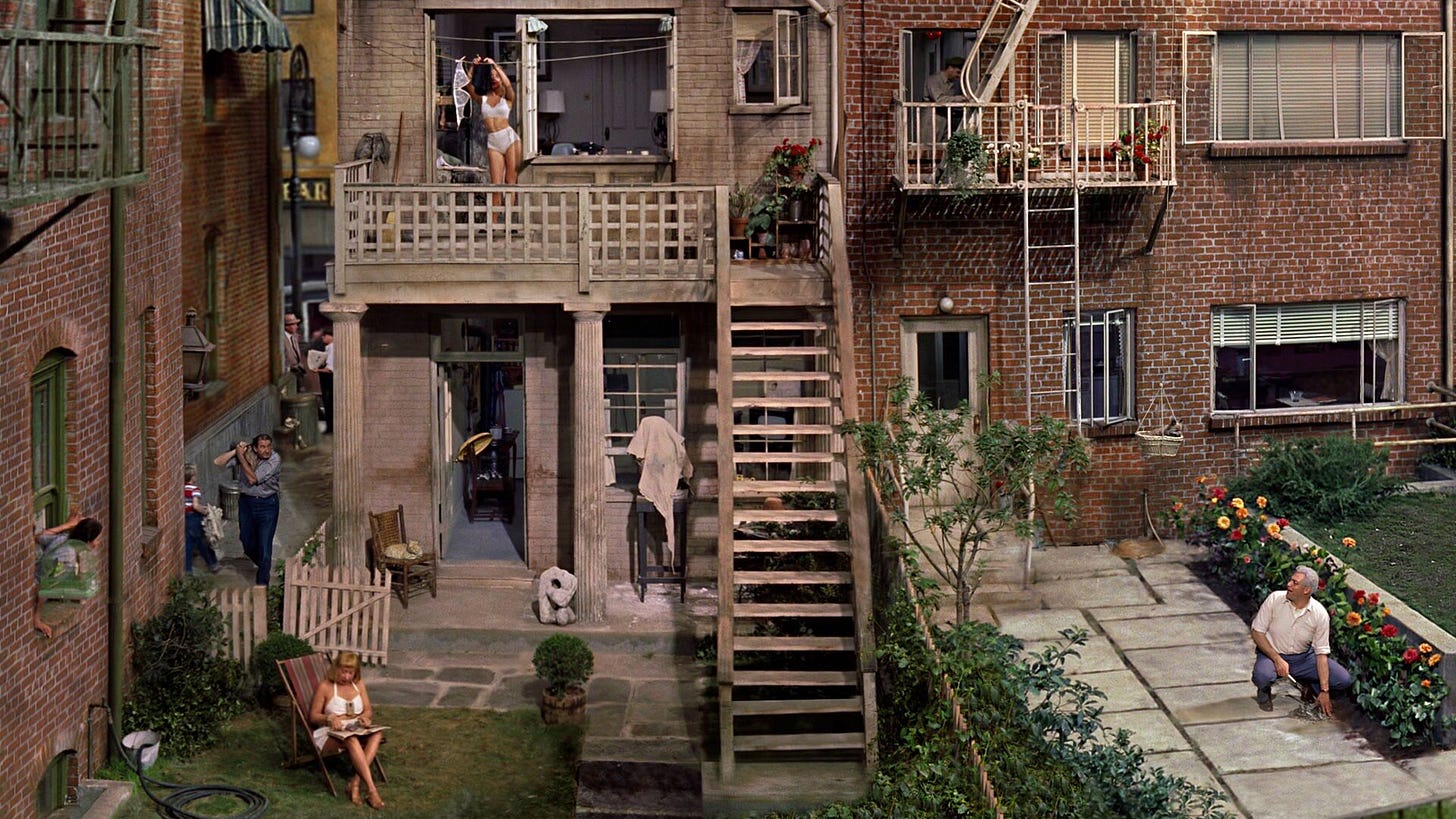

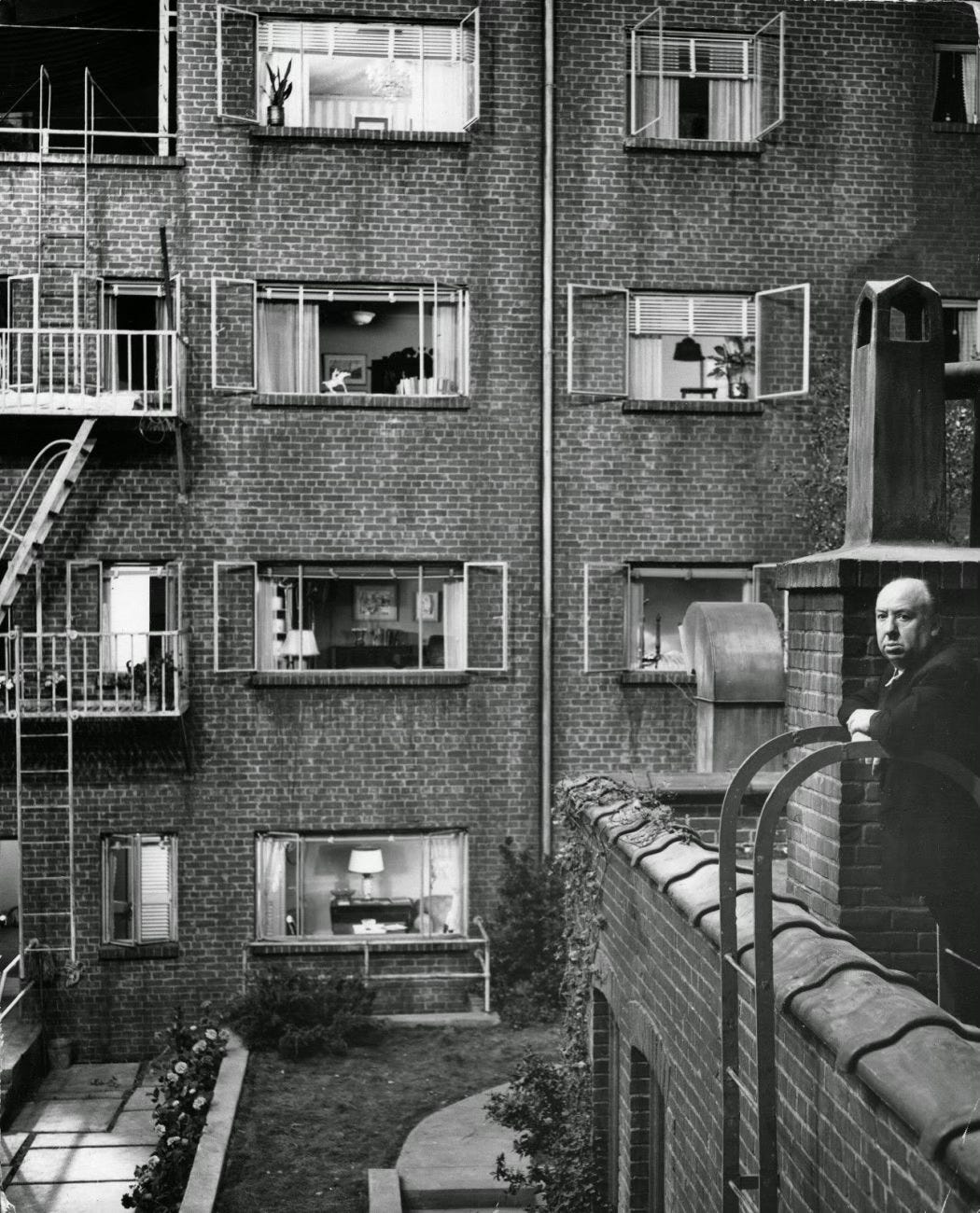
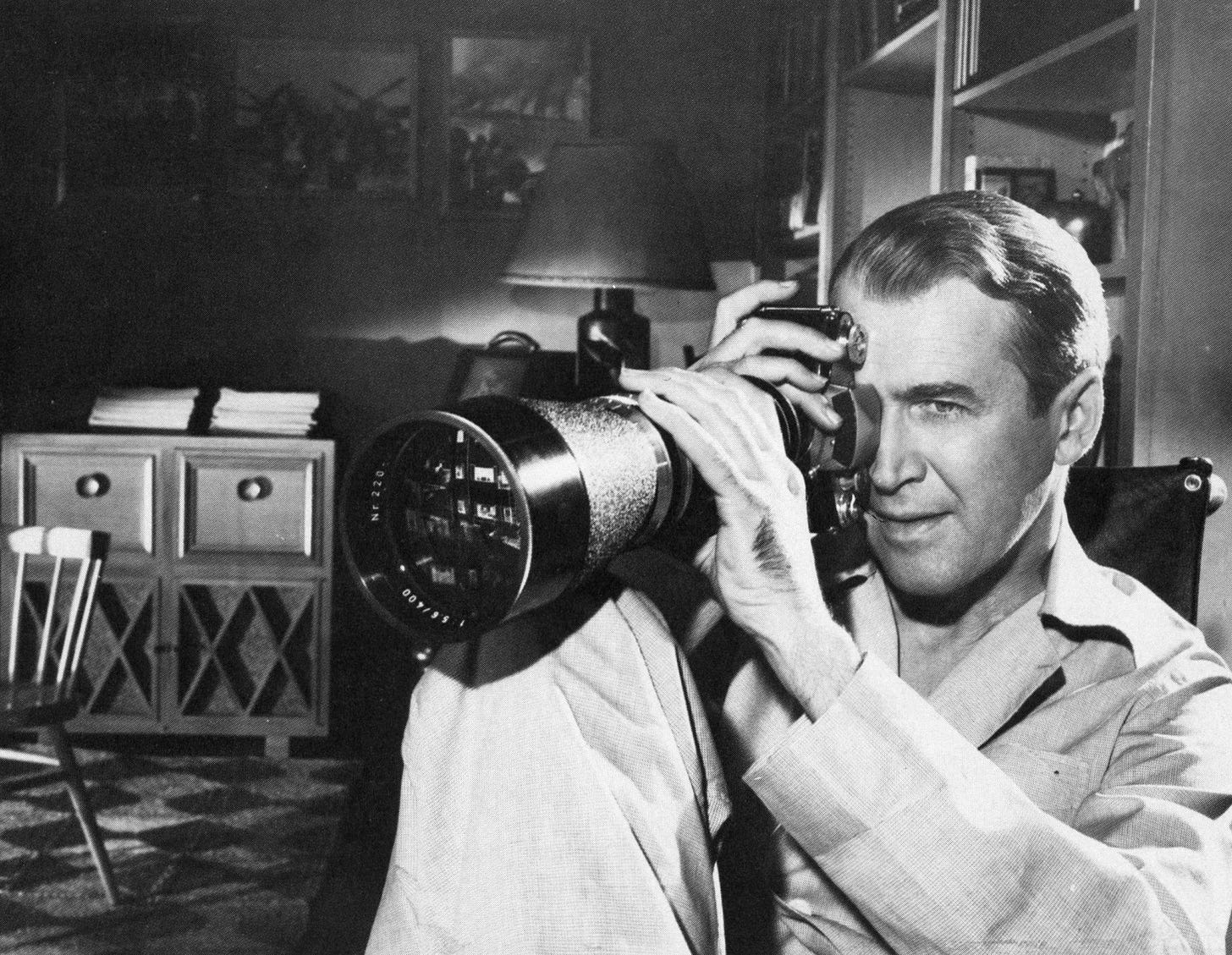
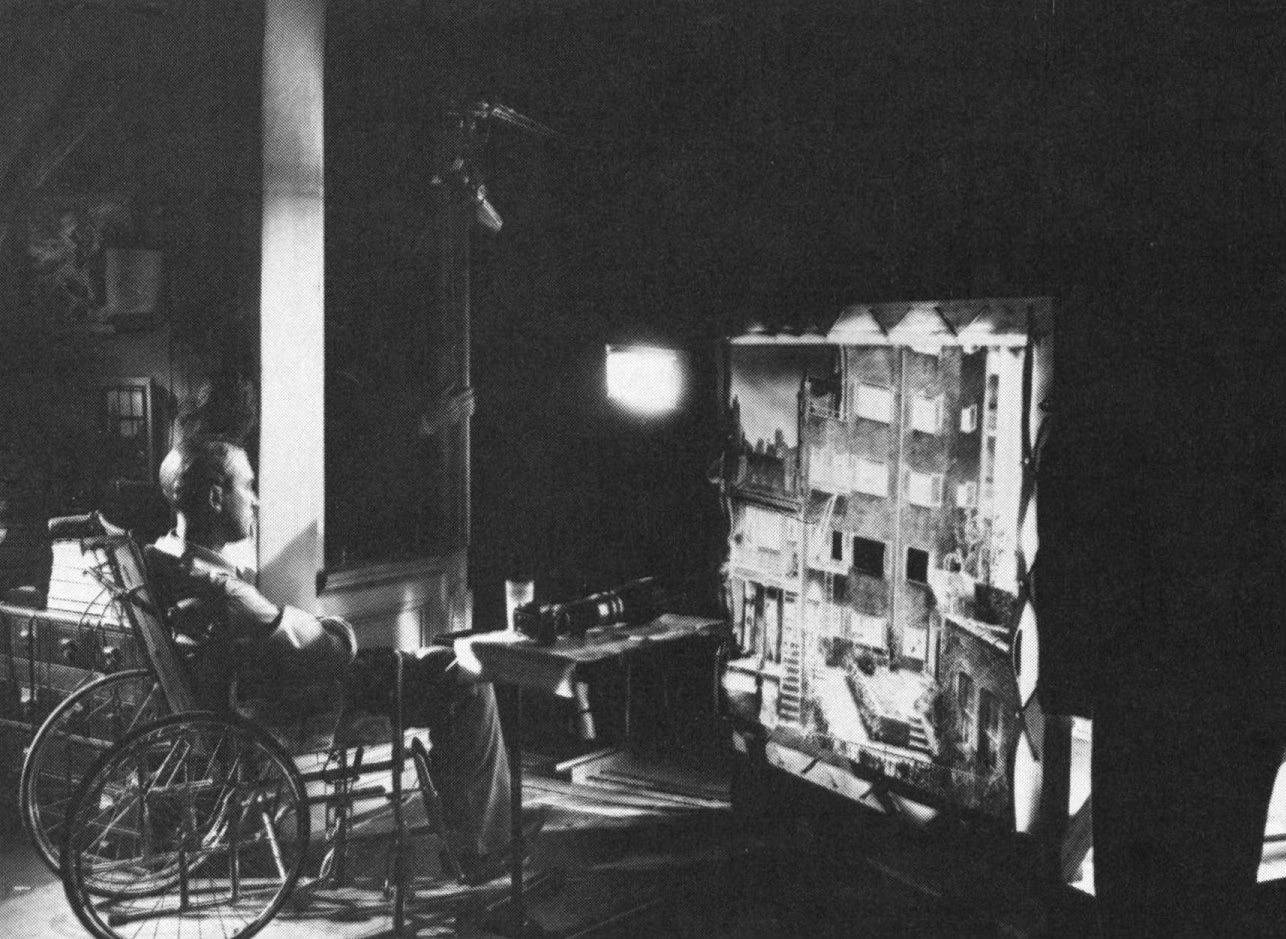
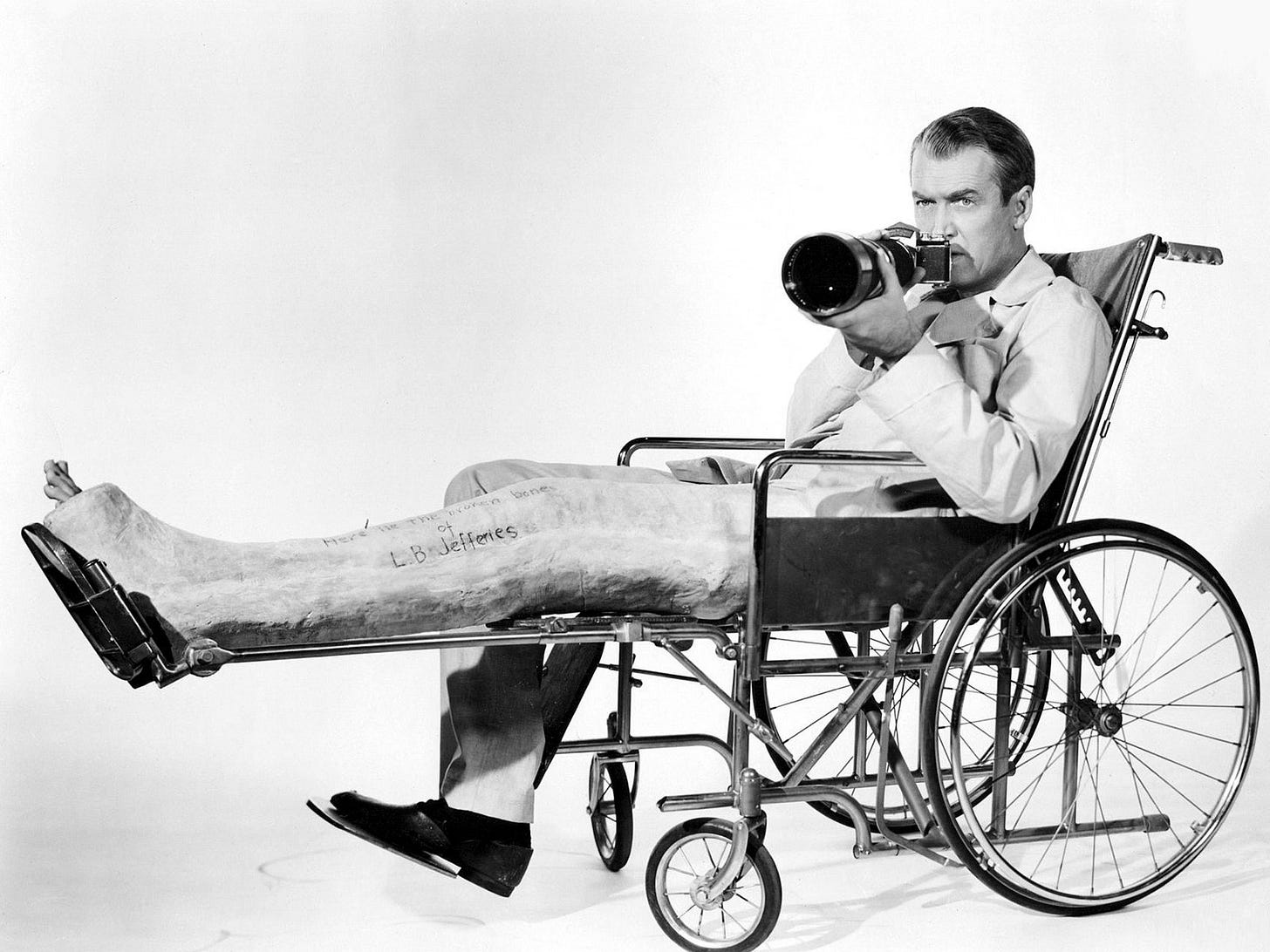
This and Dial M for Murder are my favourite US Hitchcock films (see Sabotage -1936 if you want to see some of his excellent early stuff made in Britain). I need to watch Rear Window again, I had not considered it had to all be a set but there's no way they could have done it otherwise. Nice article G.
I watched this film years ago and reading your post I realise I missed many details, so a rewatch is in order. It’s so satisfying to know about all the work that has happened behind the scenes and that it’s so seamlessly shown on screen, especially in a movie where the protagonist is bound to the limits of his flat and yet the suspense builds up in such a dynamic way.